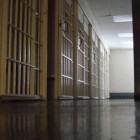
To Keep Kids Out of the System, We Need Community Involvement
|
Most of the teenagers walking into my courtroom were 1st or 2nd time visitors. They didn’t want to return, and we worked with them and their parents to make that first visit their last one. However, some kids need more support and intervention to change their life trajectories from negative to positive. After seeing the same teens in court year after year, judges wonder what it will take to change the behaviors that keep bringing them back into court. Short of sending a youth off to a state prison, the options usually available to juvenile court judges include stern lectures and warnings, mandated community service, assessment and rehabilitative services, and electronic monitoring. Sometimes judges reach a point where everything has been tried at least once, and yet the youth is again back in court with a new offense. When that happens, will the judge leave the youth with his or her family and try for rehabilitation again?







